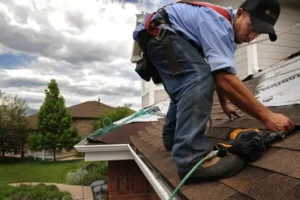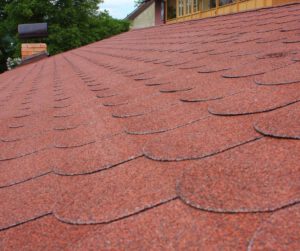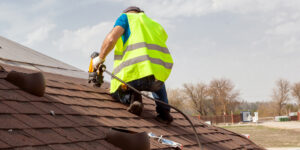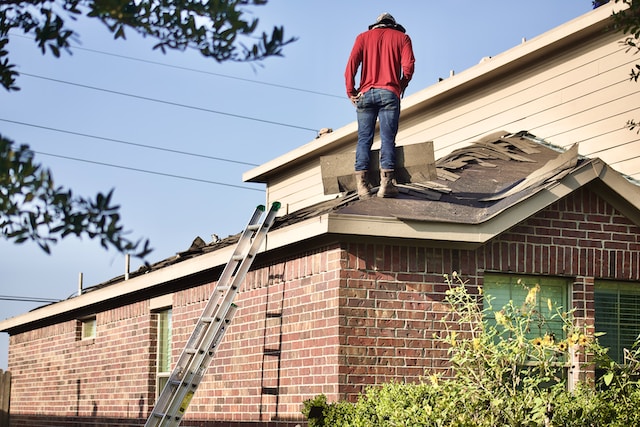Orlando Roofers known as a roof mechanic or roofing contractor, specializes in roof construction. They replace, repair, and install roofs on buildings using various materials.
Roofers work outside in all weather conditions, often high above ground level. They must be physically able to perform demanding tasks and have excellent customer service skills.
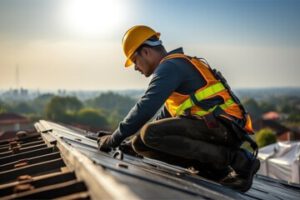
Local roofers have a vested interest in the community and take pride in providing top-quality work. They are familiar with local building codes and safety guidelines. They also know how to deal with the unique climatic conditions of your region. They can install different roofing materials, including asphalt, slate, cedar shake, clay tiles, and solar shingles. They also offer roofing inspection services to ensure your roof is up to code.
When choosing a local roofer, ask them to provide references from past customers. This will help you decide whether they fit your project well. When you call the references, ask them about the roofer’s reliability, communication skills, and overall experience. You can also use online reviews to learn more about a potential contractor.
The best local roofers will have a solid reputation and always look for new ways to impress their clients. They will ensure the job is done properly and only consider it finished once they meet or exceed your expectations. A national or out-of-town company may be less invested in its reputation and is more likely to cut corners to save money.
Often, local roofers will be willing to work with you on the price of your project. This can save you a lot of money in the long run and allow you to fix your roof even with limited cash. Local roofers will also be more willing to work with you on your insurance claim and can give you a better estimate of the costs involved.
Choosing a local roofing company that is licensed and insured is important. This will protect you against fraudulent companies and ensure the work is completed safely. Also, check the contractor’s physical address and phone number. A local address is a good sign that the company is legitimate and that you are dealing with an actual roofer instead of a salesperson.
Roofers perform roof-related services, including installation, repair, inspections, and replacement. They work on residential and commercial properties and can install many roofing materials, including asphalt shingles, flat roofs, metal roofs, tile, etc. Some also specialize in other exterior home improvements, such as siding and window replacement.
Those who work in the roofing industry often enjoy working outdoors and being physically active. However, the job can be challenging because it involves working at heights and dealing with heavy tools. Many roofers must attend specific training courses and undergo on-the-job training to learn the necessary skills. They also need to understand and adhere to the safety rules set by their employers.
A professional roofer can help ensure the structural integrity and durability of a building’s roof and provide expert advice about its maintenance. They can also inspect the condition of a roof and identify any potential problems, such as leaks or insect infestations. They can then recommend the best course of action to take.
The most common service provided by roofers is repairing or replacing damaged roofs. This type of roofing requires specialized knowledge of different materials and techniques, such as nailing, flashing, and ventilation. Roofers can also use various tools and equipment, such as power, ladders, scaffolding, and safety gear, to complete their work.
Roof leaks are a serious problem that can cause water damage to drywall, wood framing, and other areas of the structure. They can also lead to toxic mold in hidden places, costing property owners a lot of money. Professional roofers can isolate the source of a leak by examining internal water damage and tracing it to the external part of the roof.
When choosing a roofer, it’s important to consider their reputation and experience. A good roofer will have a strong track record and be licensed and insured. They will also be able to give you a fair price estimate and work within your budget. Generally, they will offer high-quality products, warranties, and comprehensive insurance coverage.
When storms hit, they can cause a lot of damage. Many homeowners may have to hire roofers to repair the harm caused by heavy winds, lightning, rain, or hail. These businesses are called “storm chasers.” They follow severe weather, seeking out areas with a lot of damage. These contractors usually work directly with the homeowner’s insurance company.
These contractors may also offer home improvement services. They can install new windows, roofing, and siding. They can also replace gutters and downspouts. Many of these companies advertise on television and the Internet. They may also place ads in the local newspaper and phone book.
You can tell if these contractors are legitimate in a few ways. One way is to ask for references from previous customers. Another way is to check with the Better Business Bureau. It would be best to look for the contractor’s license number. A legitimate contractor will have a valid license number and will be insured.
Many people become fascinated with severe storms and tornadoes after experiencing a close encounter themselves or seeing them in the news. Others are driven by scientific curiosity. Still others are captivated by the beauty of the sky and land. Whatever the motive, many people find themselves drawn to the hobby of storm chasing.
It’s not uncommon for professional storm chasers to offer their experiences and advice to those interested in taking up the hobby themselves. Some of them even operate tour services, which can be very lucrative. The popularity of the Discovery Channel’s reality series Storm Chasers has been attributed to a recent surge in interest in the hobby.
As with any activity that involves risks, it’s important for those interested in storm chasing to learn the ropes before attempting it on their own. A good way to do this is to get a ride with an experienced chaser. This will allow you to learn about radar meteorology, satellite meteorology, and mesoscale meteorology while gaining the needed experience.
Aside from riding along with professionals, other resources for people who want to become storm chasers include the online educational resource MetEd. It provides free training in these fields and more.
In addition, a roofer should have a strong social media presence with an active and engaging Facebook page and a well-written blog that provides helpful tips and insights to homeowners. This helps establish a rapport with prospective clients, essential in building trust and encouraging them to book services with your company.
Lastly, a roofing contractor should be licensed and insured and have a reputation for good work. They should also be willing to answer questions and concerns promptly. If a problem arises, a good roofing company will respond gracefully and try to rectify the situation.
The best way to find a great roofing contractor is to ask for referrals from people you know who’ve recently used their services. They’ll often provide a personal connection and give you the benefit of their first-hand experience. Moreover, they’ll likely offer quality service because they have a relationship with you and a sense of responsibility.
Many prospective home improvement contractors start their search by using local directories and review sites. Those sites help them connect with various home service providers in their area. To stand out from the competition, roofing companies should be active on these platforms and regularly check what other customers say about them.
Which displays their Google ratings on their website and offers two options to contact them: call or text. The latter feature is ideal for people who want to avoid initiating a phone conversation, and it shows that the company has considered its target audience’s preferences.
Finally, a great roofing company should have an efficient workflow and effective marketing strategies. They’ll use tools like Jobber to manage their jobs, track project progress, and invoice clients quickly. They’ll also use SalesRabbit to generate leads and guide quality prospects through their sales funnel. These tools and strategies will help them save valuable time while ensuring they get the most out of their roofing business.
